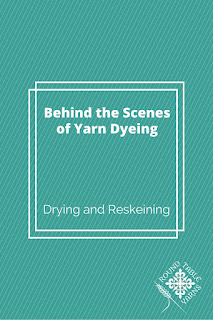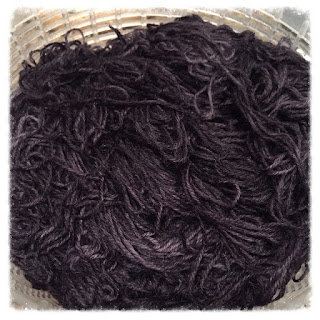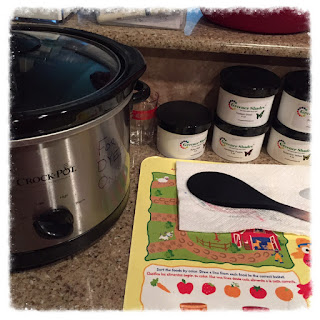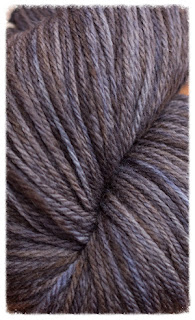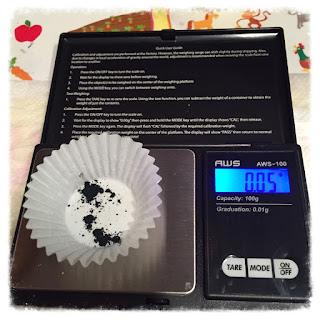Last week, my husband and I took a vacation to Tahiti (French Polynesia). We stayed on two islands, Bora Bora and Moorea. My brother-in-law and his wife went with us but all the kids stayed behind with grandparents (thank you so much to the grandparents for child care!). Or rather, I should say that we went with my BIL and his wife because they're the ones who invited us and because this was the third time that they've gone there!
Now, I'll be honest, traveling to Tahiti is expensive. And normally this would not be a trip that was within our budget. But my BIL knows some tricks, and that's how we were able to pull it off. The trick? Credit card points. He told us exactly which credit cards to take out when to maximize on our points. We'd each open up a credit card account, do the action required to get the points (such as spend $1000 within three months--super easy when you do things like pay your bills with the card), pay off the charges immediately, and close the credit card account. By using the credit card points, we were able to purchase our flights from Los Angeles to Tahiti and four of the nights we stayed in Bora Bora, saving us literally thousands of dollars. We still had to pay for some things (flight to LA, flight within the islands, and the house on Moorea), but it make the trip much more manageable. In fact, we wouldn't have been able to go without using the points. But enough about that. Let's get to the actual trip!
We left Dallas late afternoon and left LA late evening, which meant, theoretically that we could sleep on the plane to Tahiti and be ready to start the day when we landed the next morning. (There is only a 4 hour time difference between Tahiti and Dallas, so that wasn't too bad.) I say theoretically because sleeping on the plane doesn't always happen and isn't the greatest sleep. And indeed, I didn't sleep very well on the plane. But I was also too groggy and restless to do much of anything else.
When we got to Tahiti (the actual island of Tahiti; French Polynesia is made up of several islands), we still weren't done traveling. We were starting our stay in Bora Bora, which meant we had to get on another little plane to fly from island to island. Right away, I learned that the climate there was really hot. And that's coming from someone who grew up and still lives in Texas! And not every place had air conditioning, including the airport (there were lots of fans, which helped but didn't really do as much as AC would have). So we started sweating right away while in line at customs. Ugh. But we got on the little plane and flew to Bora Bora. The view from the window was amazing because the water was just so blue and clear. Incredible!
When we landed on Bora Bora, I discovered that our journey still wasn't at an end. We needed to take a boat to the hotel we were staying at. And it wasn't a short boat ride! Finally, we got to the resort and after a quick tour, we were taken to our beach bungalows. Although I appreciated the incredible view we were getting, I have to admit that I didn't partake of that view very much at first. Instead, I found myself lying down on the little couch (yay for air conditioning in the bungalow!) and trying to get rid of a headache. My husband, BIL, and his wife decided to go get pizza at a place BIL/wife had been before and bring it back to eat. When they got back, we all devoured our pizzas (which was quite good)! (We had pizza at this restaurant a few times during our trip.)


After that, I felt much better and walked out onto the beach for a while, once again marveling at how clear the water was. My husband and I decided to just go ahead and get in the water right away, so we changed into our swimsuits and waded in. The water was shallow for quite a ways so we were able to easily go out and swim to some coral formations not too far from our bungalow. Snorkel masks in place, we got to see tons of fish swimming around the coral. (Later during our visit, we saw a ray swimming around in that area, which was really cool!)
That night, we went to
Bloody Mary's, which is apparently a pretty famous restaurant, for dinner. As luck would have it, they were having "Country Night" that night, and we all laughed when we told them we were from Texas. I have to admit that I don't like seafood, so while my husband took advantage of the wonderful selection of seafood, I stuck to sausage and chicken. The restaurant definitely had a lot of atmosphere, with sand on the floors and wooden stools to perch on (that didn't always sit straight on the ground). We went back to this restaurant a few nights later on a non-themed night (I had ribs that time).
 |
| View from a pier right across from the restaurant. |
 |
| I think this was actually taken on Moorea, but I'm posting here anyway. Sunsets were gorgeous! |
The next day, my husband and his brother went on a jet skiing tour. My SIL couldn't go because she was pregnant so I chose to stay with her. We explored a shop in walking distance from the hotel (I got a shirt for Luke) as well as a small convenience store, where we got some snacks. Then we went back to our bungalows and sat out on the deck, reading, until the guys got back. (I read four and a half books during the trip.)
One of the trips we did all go on was a snorkeling adventure, which was supposed to be about three hours long but turned out to be closer to five hours! Good thing we brought extra sunscreen! (Unfortunately, my SIL didn't reapply sunscreen as often as she should have and got a little too much sun on her arms and thus didn't feel very good the rest of that day or the next.) And good thing that I had a motion sickness patch to wear (I definitely needed it!) that day. But the trip was so worth it! Our two tour guides were really funny and they also serenaded us with the ukulele and singing while we were on the boat. It was nice because it was just 8 of us (four couples) on this tour.

The first stop was to swim with sharks. Yup, sharks. They were mostly reef sharks as well as a couple of lemon sharks (or maybe they were nurse sharks--my husband and his brother each heard something different from the tour guide). We got right into the water with them! Eek! The water was fairly deep where we were and the sharks didn't come right up to us, but there was nothing stopping them from doing so!
My favorite stop was the second one where we got to swim in shallower water and feed some sting rays. Here, the rays were right there with us and we got to touch them and have them come right up to us (even having them swarm us if we were feeding them).
I could have stayed there with those rays for quite a while (and we did), but our guides noticed some of the other boats had stopped a little ways out from where we were and discovered that they had found some manta rays. One of my husband's biggest wishes on this trip was to see manta rays, so he was so excited about that! Apparently, it was pretty rare to get to see them on this tour, so we were quite lucky! And there were three of them that we got to see. They didn't come up to us, but we got to swim right over them, and boy were they huge!
After that, we went to a coral garden and got to see (and feed) lots of fish. My husband saw an octopus, but I wasn't near him at the time so I missed it. But the fish. So many different kinds! We ended the tour by going to a small island and eating fresh fruit and drinking fresh fruit juice. I think this tour was my favorite part of our entire trip.
After two nights of staying in the beach bungalow, we moved to one of the over the water bungalows for the last two nights on Bora Bora. It was really neat to walk out our door and just look down and see fish (or go for a swim right there). Walking to our bungalow was when we saw the ray in the water there. But we didn't even have to leave the bungalow to see fish as the coffee table in that bungalow was made of glass with a glass bottom so we could just sit and watch fish from right there!
I don't have a lot to say about the food on this trip since as I mentioned, I'm not big on seafood, but my husband who loves seafood (and doesn't get it often since I don't like it) really enjoyed everything that he tried. I stuck mostly to beef, chicken, and pepperoni pizza. My husband got seafood pizza at two different places and said both were excellent.
After our four nights on Bora Bora, we got back on the little plane to go back to the island of Tahiti. From there, we took a ferry across to the island of Moorea, where we were staying for the remainder of our trip. Here, we had rented a private house for our lodging, so we also rented a car. Mostly, there was one road that went around the entire island, so there were some really great views as we were driving.
The house we stayed at was gorgeous and was right on the beach. The only problem was that only two of the four bedrooms were air conditioned (which wasn't a problem as far as the bedrooms since we needed only two anyway). So to feel comfortable in the rest of the house, it was best to open the front and back doors to allow the breeze to come through (or to just sit outside in the breeze). However, the problem there was the mosquitoes! Although we had some good bug spray and we sprayed ourselves liberally with it, we all got quite a few mosquito bites during our time at the house. So much so that we didn't spend as much time outside or with the doors open as we would have liked. So I feel that we didn't get to take as much advantage of the location of the house with the beach access as we could have.
 |
| View from the back of the house |
 |
| View from the front of the house |
While on Moorea, we went to the Lagoonarium, which took us out to a small island off the coast which had a wonderful coral garden. Ropes were set up along the perimeter of the garden for use as a guide (and they were needed because the current was quite strong in a few places). I made one trip around the ropes (which took quite a while) and saw even more fish than I had seen before. After that, I was quite tired, so I sat out on the beach (it was an overcast day, which was actually quite nice) with my SIL while my husband and his brother went around again. Then the guide there did a feeding, and we got to see a moray eel (cool!) and more rays and reef sharks. I didn't get back in the water at that point, just watched from the shore, but my husband was in the water and this time the sharks got even closer than on our other trip! We hadn't fed the sharks on the other trip, but the guy here did (making sure the people stayed back out of the feeding area) and wow! Those sharks are super fast!

There was a place on Moorea where we could have swam with dolphins, and I really wanted to do that, but it was really expensive and pregnant women (my SIL) weren't allowed to do it, so we opted out of that experience. Alas. We also didn't see any sea turtles (my son kept asking if we had seen any so it was sad to have to tell him no). But everything we did get to see was really amazing.
The trip back wasn't pleasant. Because of the timing of the ferry and our flight out of Tahiti, we had to sit at the airport for about six hours. The un-airconditioned airport. Then I didn't sleep very much on the flight, just dozed off and on. So I was really really happy to get home. And I have to be honest, the heat and the mosquitoes were really bad and took away a lot from the overall experience (especially on Moorea). This trip was really a trip for my husband (being fully honest here, I'm not really a beach person. *gasp*) and he had an amazing time. And despite the heat and the itching from all my mosquito bites, I'm glad that I went and especially glad that I swam with the rays. But our next travel destination is my choice. So now it's time for us to start earning credit card points again because next up will be Scotland!
